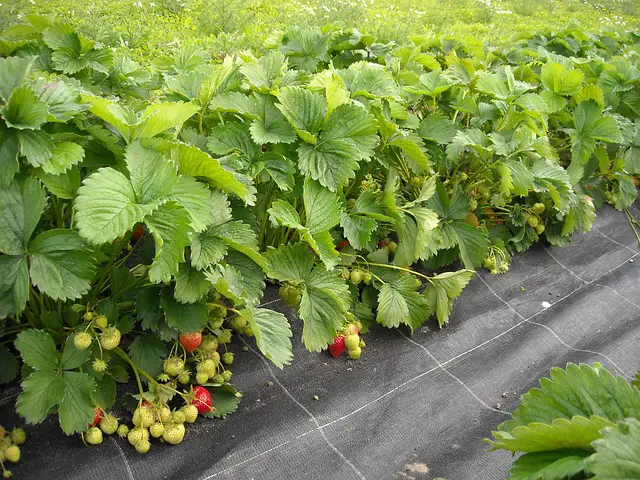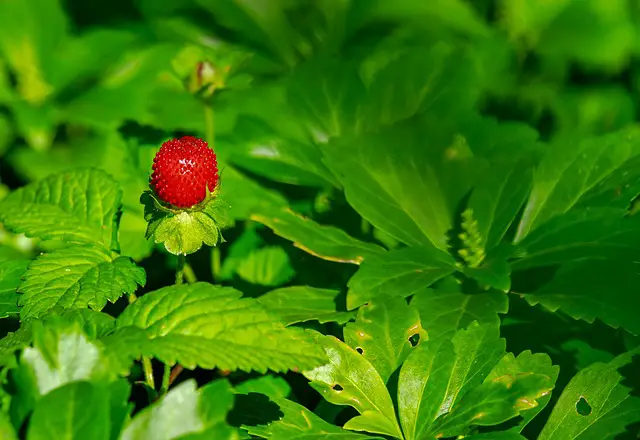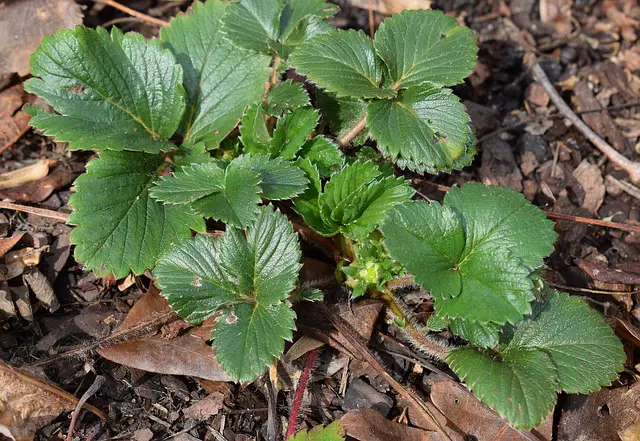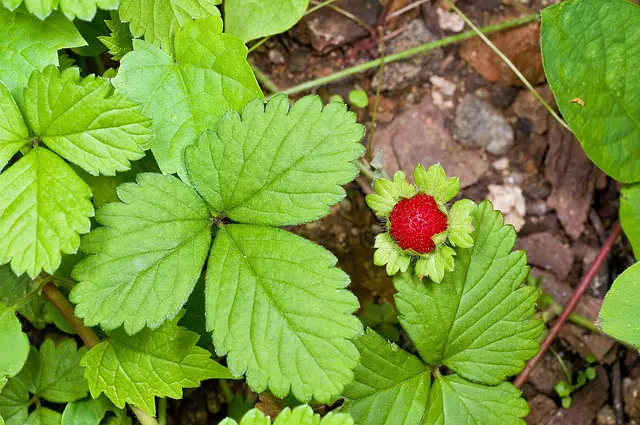Strawberry plants are a popular choice for gardeners and farmers alike, thanks to their sweet, juicy fruit and ease of care. However, one issue that can arise with strawberry plants is drooping or wilting leaves. This can be a concerning problem for growers, as it can indicate a variety of issues that need to be addressed.
Understanding the causes of strawberry plant drooping is the first step to addressing the problem. Some common causes include improper watering, low temperatures, high-salinity environments, and disease or infestation.
Identifying the specific cause of drooping can help growers take the appropriate steps to revive their plants and prevent future issues.Preventing strawberry plant drooping is also an important consideration for growers.
Proper soil preparation, organic fertilization, mulching, and pest management can all help keep strawberry plants healthy and thriving. By taking proactive steps to prevent drooping, growers can enjoy a bountiful harvest of sweet, juicy strawberries.
Key Takeaways
- Understanding the causes of strawberry plant drooping is crucial for growers.
- Proper soil preparation, fertilization, and pest management can help prevent drooping.
- Identifying and addressing specific causes of drooping is key to reviving plants and preventing future issues.
Also don’t miss:
Understanding Strawberry Plant Drooping

Strawberry plants are a popular choice for many gardeners due to their delicious fruit and ease of cultivation. However, sometimes these plants can experience drooping or wilting leaves, which can be a cause for concern.
Understanding the reasons behind strawberry plant drooping can help gardeners take proactive measures to ensure the health of their plants.
One common cause of strawberry plant drooping is overwatering. When the soil around the plant becomes too saturated, the roots can become waterlogged and begin to die off.
This can result in droopy leaves, yellowing, and ultimately, a dying plant. To avoid overwatering, gardeners should ensure that the soil around their strawberry plants is well-draining and not watered too frequently.
On the other hand, under-watering can also cause strawberry plant drooping. When the soil becomes too dry, the plant’s leaves will begin to wilt as a way to conserve water. To prevent this, gardeners should ensure that their plants are receiving enough water, especially during hot weather.
Another common cause of strawberry plant drooping is temperature extremes. High temperatures can cause the leaves to wilt, while frost or cold temperatures can damage the plant’s roots and cause it to droop.
To prevent temperature-related drooping, gardeners should ensure that their plants are located in an area with suitable temperatures and protected from extreme weather conditions.
In addition to these factors, strawberry plant drooping can also be a sign of disease or pest infestations. Gardeners should regularly inspect their plants for signs of disease or pests, such as yellowing leaves, spots, or holes in the leaves.
If a problem is detected, gardeners should take appropriate measures to treat the issue before it becomes more severe.
Strawberry Plant Drooping – 5 Common Problems
Strawberry plants are a popular fruit-bearing plant, but they can be prone to drooping and wilting. There are several reasons why strawberry plants may droop, including watering issues, temperature and light conditions, nutrient deficiency, pests and diseases, and transplant shock.
1. Watering Issues
Watering issues are a common cause of strawberry plant drooping. Overwatering can lead to root rot and fungal diseases, while under-watering can cause the leaves to dry out and wilt.
It is important to water strawberry plants regularly, but not excessively. The soil should be moist but not waterlogged, and the plants should be watered at the base to avoid getting the leaves wet.
2. Temperature and Light Conditions

Temperature and light conditions can also affect the health of strawberry plants. High temperatures and direct sunlight can cause the leaves to wilt and dry out, while low temperatures can lead to frost damage.
Strawberry plants require plenty of sunlight, but they also need some shade during the hottest part of the day. It is important to plant strawberries in an area that receives adequate sunlight and to provide shade during the hottest part of the day.
3. Nutrient Deficiency
Nutrient deficiency can also cause strawberry plants to droop. Strawberry plants require a balanced fertilizer that is high in phosphorus and potassium. A lack of nutrients can cause the leaves to turn yellow and wilt. It is important to fertilize strawberry plants regularly to ensure that they receive the nutrients they need to grow and produce fruit.
4. Pests and Diseases
Pests and diseases can also cause strawberry plants to droop. Common pests that affect strawberry plants include mites and aphids, while common diseases include verticillium wilt and crown rot.
Infected plants may exhibit symptoms such as yellowing leaves and stunted growth. It is important to monitor strawberry plants for signs of infestation or disease and to take appropriate measures to control the problem.
5. Transplant Shock
Transplant shock can also cause strawberry plants to droop. When plants are transplanted, they may experience stress due to changes in temperature, light, and moisture levels.
This can cause the leaves to wilt and droop. It is important to transplant strawberry plants carefully and to provide them with adequate water and nutrients to help them recover from transplant shock.
Identifying Specific Diseases
When strawberry plants start drooping, it could be an indication of a disease. Identifying the specific disease is crucial in order to take appropriate action and prevent further damage. Here are some common diseases that may cause strawberry plants to droop:
Crown Rot
Crown rot is a fungal disease that affects the base of the plant. It is caused by different species of Phytophthora and can result in the death of the plant. The first symptoms of crown rot include wilting, yellowing, and browning of the leaves. The crown of the plant may also become soft and discolored.
To prevent crown rot, it is important to plant strawberries in well-draining soil and avoid overwatering. Fungicides can also be used to prevent the disease from spreading.
Verticillium Wilt

Verticillium wilt is a fungal disease that affects the vascular system of the plant. It is caused by the fungus Verticillium dahliae and can cause the leaves of the plant to turn yellow and wilt. The fungus can survive in the soil for several years, making it difficult to control.
To prevent verticillium wilt, it is important to plant strawberries in soil that is free from the fungus. Fungicides can also be used to prevent the disease from spreading.
Fungal Diseases
Various fungal diseases can cause strawberry plants to droop. These include botrytis fruit rot, powdery mildew, and anthracnose. Symptoms of these diseases include wilting, yellowing, and browning of the leaves. The fruit may also become discolored and develop a fuzzy growth.
To prevent fungal diseases, it is important to maintain good air circulation around the plants and avoid overhead watering. Fungicides can also be used to prevent the diseases from spreading.
Preventing Strawberry Plant Drooping
To prevent strawberry plant drooping, it is important to maintain proper care and management of the plants. This includes ensuring the plants receive adequate water, ideal temperature and light, nutrient management, and pest and disease control.
1. Proper Watering
Overwatering or underwatering can cause strawberry plants to droop. To prevent this, it is important to water the plants properly. Water the plants deeply once a week, ensuring that the water reaches the roots.
Avoid watering the leaves, as this can lead to fungal diseases. It is also important to ensure that the soil is well-drained and that there are drainage holes in the container or planting bed.
2. Ideal Temperature and Light
Strawberry plants thrive in temperatures between 60°F and 80°F. If the temperature exceeds 80°F, it is important to provide partial shade to prevent the leaves from wilting. Additionally, strawberry plants require at least 6 hours of sunlight per day. Ensure that the plants are planted in an area that receives adequate sunlight.
3. Nutrient Management

Strawberry plants require adequate nutrients to prevent drooping. It is important to ensure that the soil is fertile and contains adequate levels of phosphorus and potassium. Use organic fertilizer and incorporate organic matter into the soil to improve soil quality and conserve moisture.
4. Pest and Disease Control
Pests and fungal diseases can cause strawberry plants to droop. It is important to monitor the plants regularly and take appropriate measures to prevent infestations. Use natural pest control methods such as companion planting and insect-repelling plants. Additionally, ensure that the plants are disease-free before planting and practice good hygiene to prevent the spread of diseases.
Reviving a Drooping Strawberry Plant
When a strawberry plant is drooping, it may be an indication that it is not receiving the proper care it needs. To revive a drooping strawberry plant, it is important to identify the root cause of the problem and take appropriate steps to address it.
One of the most common reasons for drooping strawberry plants is improper watering. Strawberry plants require consistent moisture, but overwatering can lead to root rot and other problems.
On the other hand, under-watering can cause the leaves and stems to wilt. It is recommended to water strawberry plants deeply once a week, ensuring that the soil is moist but not waterlogged.
In addition to proper watering, it is important to ensure that the soil is well-draining and rich in nutrients. Adding compost to the soil can help to improve its quality and provide the plant with the energy it needs for healthy growth and fruit production.
Another important factor to consider when reviving a drooping strawberry plant is pruning. Removing dead or damaged leaves, stems, and flowers can help to redirect the plant’s energy towards healthy growth.
Additionally, removing runners can help to prevent the plant from becoming overcrowded and diverting energy away from fruit production.
In some cases, a drooping strawberry plant may need to be transplanted to a new location with better soil quality and drainage. This should be done carefully to avoid damaging the plant’s delicate roots.
Conclusion

There are several reasons why strawberry plants may droop. Indoor strawberry plants are particularly susceptible to wilting due to their dependence on proper watering, drainage, and soil nutrients.
When growing strawberry plants indoors, it is important to monitor the plant’s environment and adjust as necessary to ensure optimal growing conditions.
Some common causes of strawberry plant drooping include under-watering, over-watering, poor drainage, high-salinity environments, and disease/infestation. To prevent drooping, it is important to maintain proper moisture levels in the soil, provide adequate drainage, and monitor the plant for signs of disease or infestation.
If a strawberry plant is drooping, it is important to take action quickly to prevent further damage. This may include adjusting watering schedules, adding nutrients to the soil, or treating the plant with pesticides or fungicides.
Frequently Asked Questions
How to revive wilted strawberry plants?
Wilted strawberry plants can be revived by watering them immediately. It’s important to water them deeply and ensure that the soil is well-draining. If the plant is severely wilted, it may be necessary to remove some of the damaged leaves to help it recover.
How to save overwatered strawberries?
Overwatered strawberry plants can be saved by reducing the amount of water they receive. It’s important to allow the soil to dry out between waterings to prevent the roots from becoming waterlogged. If the soil is consistently wet, it may be necessary to transplant the plant to a better-draining location.
How often to water strawberry plants?
Strawberry plants should be watered deeply once a week, or more often during hot, dry weather. It’s important to ensure that the soil is well-draining and that the plant is not sitting in standing water.
Strawberries dying on vine?
Strawberries that are dying on the vine may be suffering from a lack of water or nutrients. It’s important to ensure that the plant is receiving enough water and that the soil is rich in nutrients. In some cases, it may be necessary to remove some of the damaged fruit to help the plant recover.
Strawberry plant crown rot?
Strawberry plant crown rot is a fungal disease that can be caused by overwatering or poor drainage. It can cause the plant to wilt and eventually die. To prevent crown rot, it’s important to ensure that the soil is well-draining and that the plant is not sitting in standing water.
Do strawberry plants like a lot of water?
Strawberry plants require regular watering, but they do not like to be waterlogged. It’s important to ensure that the soil is well-draining and that the plant is not sitting in standing water. Overwatering can lead to root rot and other problems.

Hey, I’m Lisa and I’ve been an avid gardener for over 30 years. I love writing, talking and living in the garden! Feel free to connect with me on my socials below


